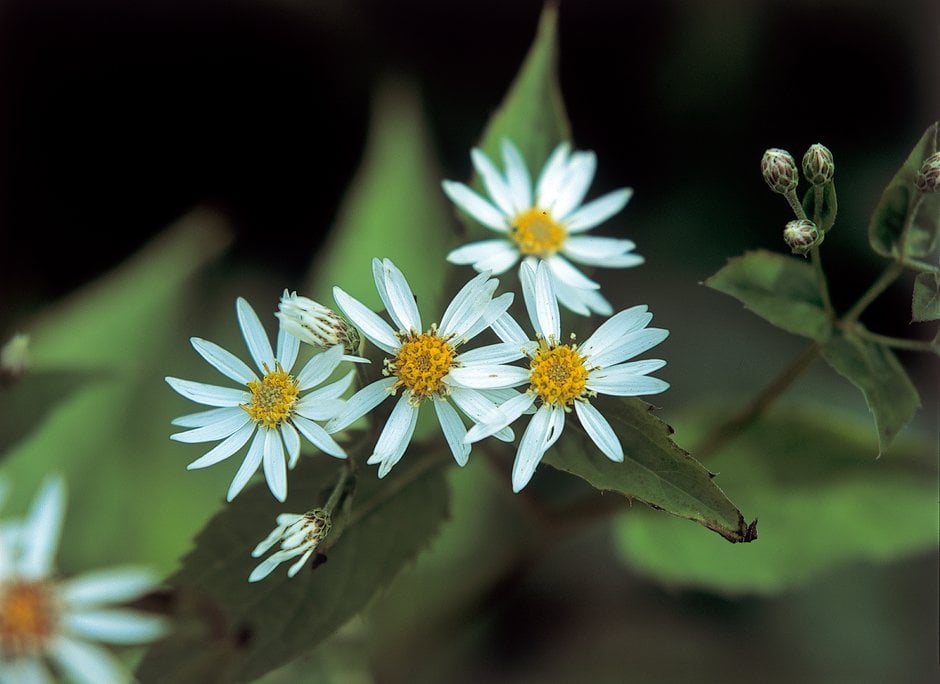Eurybia schreberi
Schreber's aster
A gently spreading, rhizomatous perennial with dark green, tooth-edged foliage. Open clusters of white, daisy-like flowers with dark yellow centres are produced in late summer and early autumn

Buy this plant
Size
Ultimate height
0.1–0.5 metresTime to ultimate height
2–5 yearsUltimate spread
0.1–0.5 metresGrowing conditions
Moisture
Moist but well–drained, Well–drainedpH
Acid, Alkaline, NeutralColour & scent
| Stem | Flower | Foliage | Fruit | |
| Spring | Green | |||
|---|---|---|---|---|
| Summer | Yellow White | Green | ||
| Autumn | Yellow White | Green | ||
| Winter |
Position
- Full shade
- Full sun
- Partial shade
Aspect
West–facing or East–facing or South–facing or North–facing
Exposure
Exposed or Sheltered Hardiness
H7Botanical details
- Family
- Asteraceae
- Native to GB / Ireland
- No
- Foliage
- Deciduous
- Habit
- Bushy
- Genus
Eurybia is a genus of woody perennials. Leaf shape can differ between varieties and flowers can be white or light pink to purple with yellow corona.
- Name status
Correct
- Plant range
- E North America
How to grow
Cultivation
Best in humus-rich soil in partial shade, but tolerates most conditions including dry shade. Divide every 3-4 years to maintain vigour and flower quality
Propagation
Propagate by seed or by division, preferably in spring, replanting only vigorous, young shoots
Suggested planting locations and garden types
- Cottage and informal garden
- Prairie planting
- Cut flowers
- Flower borders and beds
Pruning
Cut down after flowering
Pests
Diseases
May be affected by fusarium wilt, leaf spot and grey moulds
Love gardening
Sign up to receive regular gardening tips, inspiration, offers and more
View our Privacy Policy
Get involved
The Royal Horticultural Society is the UK’s leading gardening charity. We aim to enrich everyone’s life through plants, and make the UK a greener and more beautiful place.